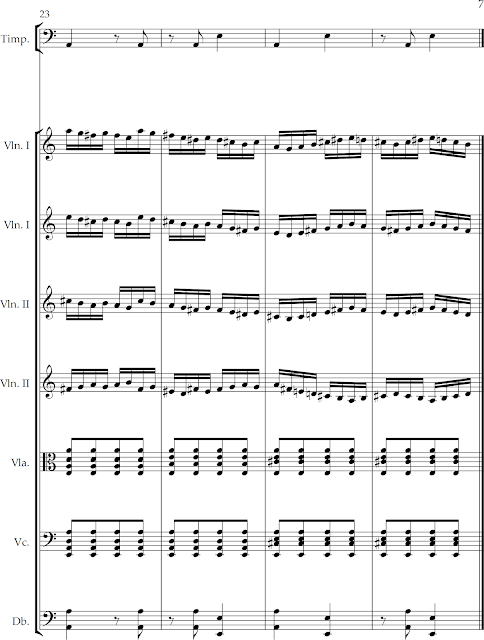CV. BARTÓK, Béla (1881-1945)
Concerto for Orchestra (1945)
1. Introduzione. Andante non troppo -- Allegro vivace
2. Pesentando le coppie. Allegro scherzando
3. Elegia. Andante non troppo
4. Intermezzo interrotto. Allegretto
5. Finale. Presto
Frankfurt Radio Symphony
Andrés Orozco-Estrada, cond.
(44:05)
Paul Hindemith was probably the first to use the seemingly contradictory title "Concerto for Orchestra" (1925). A concerto is usually thought of as a work with a soloist, such as a pianist or violinist. A large-scale work in several differently-styled movements is often called a "symphony."
But here, Bartók uses nearly every instrument in the orchestra as a "soloist" at some point or another in the Concerto.
Like the Fourth String Quartet (see Post V), Bartók uses an "arch" form with Movements 1 & 5 and 2 & 4 being similar, and with 3 in the middle:
First Movement
After a spooky start, things start to move. Check out this stretto writing for the brass at 7:25:
The movement ends with the same motifs, with a bang ...
Second Movement (Game of Pairs)
A delicate drum solo opens the movement (
10:36):
Then the games begin. A jokey theme appears with instrument pairs, each playing the same music, separated by certain intervals:
- bassoons (minor sixth)
- oboes (minor thirds)
- clarinets (minor sevenths)
- flutes (fifths)
- muted trumpets (major seconds)
The games will continue later, but first a beautiful brass chorale, accompanied by the side drum (
13:30):
The games continue, but in combinations of three or four different instruments. The music closes with the side drum (
16:49):
Third Movement
Spookiness. Check out these two bars at
17:46:
The floating dream is interrupted midway by this rough, screeching phrase in the violins (
19:09):
Followed by a half-step raise in a lower octave:
Fourth Movement
A delightful, fitful melody from the oboe (
24:57):
Finally, along comes one of the most controversial and interesting moments in the Concerto. Bartók quotes a recent quote from an much earlier quote:
And now, the Bartók quote, played on a sardonic clarinet (
26:53):
Following this he writes harsh, trilling sounds, descending jokey clarinet quintuplets, and restates the theme with added little funny details -- like smeary trombone glissandi -- then restates and permutates them with even more humor, finally relaxing into the original oboe theme (above) ...
Sadly, we'll probably never know what Bartók really had in mind. Was he quoting Shostakovich or Lehár? It sounds like he's sticking his tongue out at one or the other? Was it a dying gasp at Hitler?
Or was it -- more probably -- a tongue-in-cheek response to the Shostakovich theme (which goes for an eternity), and which was played on the radio endlessly during the later years of the war?
Fifth Movement
After a short horn fanfare, begins a
perpetuum mobile in the strings and a persistent rhythm in the timpani and double basses (
29:30):
etc.
After a calming middle section, Bartók returns to the unescapable torrent of rushing notes and rhythms and ends the piece on a big fat F Major chord!






























No comments:
Post a Comment